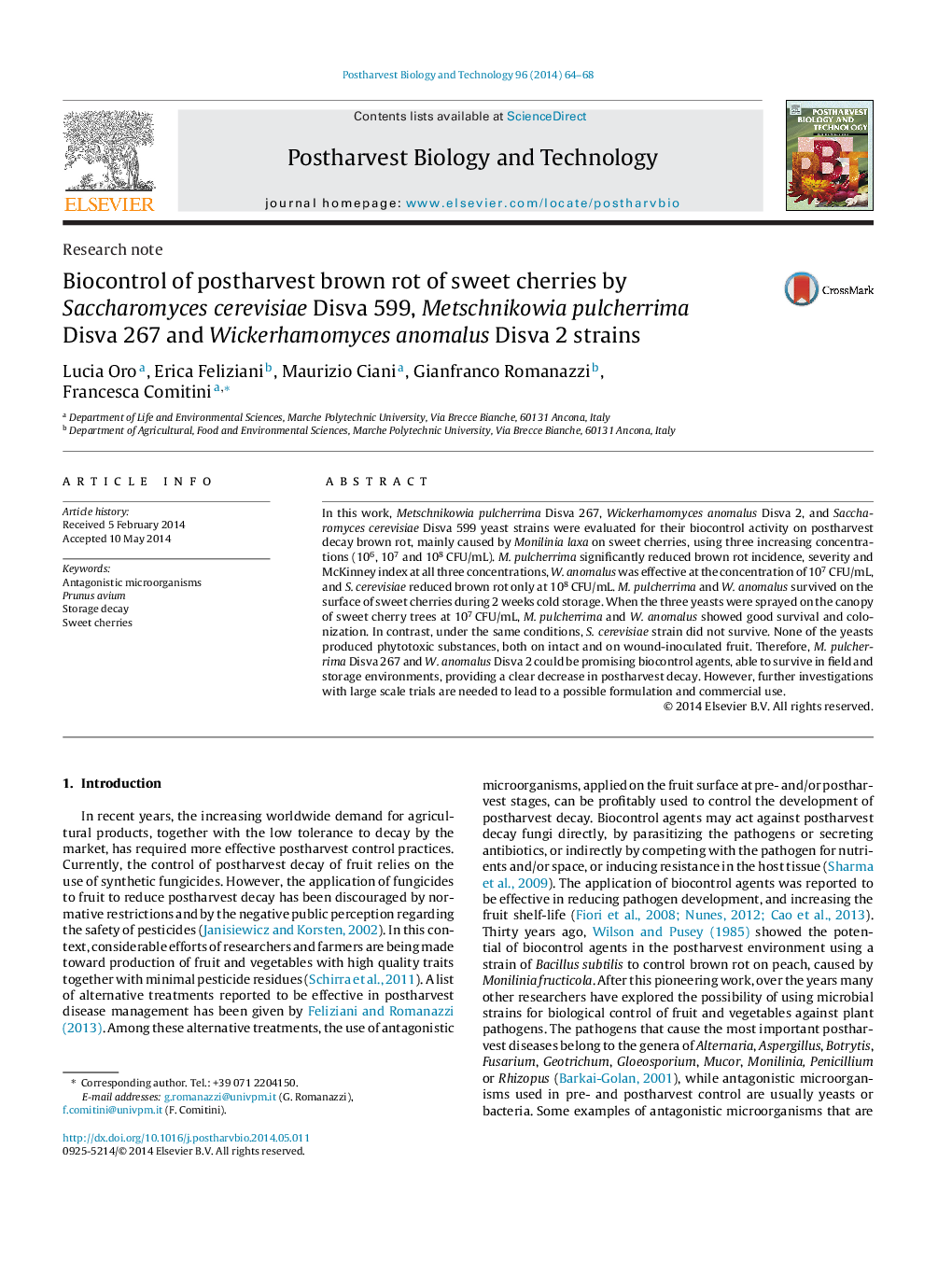| Article ID | Journal | Published Year | Pages | File Type |
|---|---|---|---|---|
| 4518260 | Postharvest Biology and Technology | 2014 | 5 Pages |
•Metschnikowia pulcherrima and Wickerhamomyces anomalus reduced brown rot of sweet cherries.•M. pulcherrima and W. anomalus survived during storage at 0 °C for 14 d.•None of the yeasts were phytotoxic to intact and wounded fruit.•Both yeasts survived after field application and colonized fruit.
In this work, Metschnikowia pulcherrima Disva 267, Wickerhamomyces anomalus Disva 2, and Saccharomyces cerevisiae Disva 599 yeast strains were evaluated for their biocontrol activity on postharvest decay brown rot, mainly caused by Monilinia laxa on sweet cherries, using three increasing concentrations (106, 107 and 108 CFU/mL). M. pulcherrima significantly reduced brown rot incidence, severity and McKinney index at all three concentrations, W. anomalus was effective at the concentration of 107 CFU/mL, and S. cerevisiae reduced brown rot only at 108 CFU/mL. M. pulcherrima and W. anomalus survived on the surface of sweet cherries during 2 weeks cold storage. When the three yeasts were sprayed on the canopy of sweet cherry trees at 107 CFU/mL, M. pulcherrima and W. anomalus showed good survival and colonization. In contrast, under the same conditions, S. cerevisiae strain did not survive. None of the yeasts produced phytotoxic substances, both on intact and on wound-inoculated fruit. Therefore, M. pulcherrima Disva 267 and W. anomalus Disva 2 could be promising biocontrol agents, able to survive in field and storage environments, providing a clear decrease in postharvest decay. However, further investigations with large scale trials are needed to lead to a possible formulation and commercial use.
